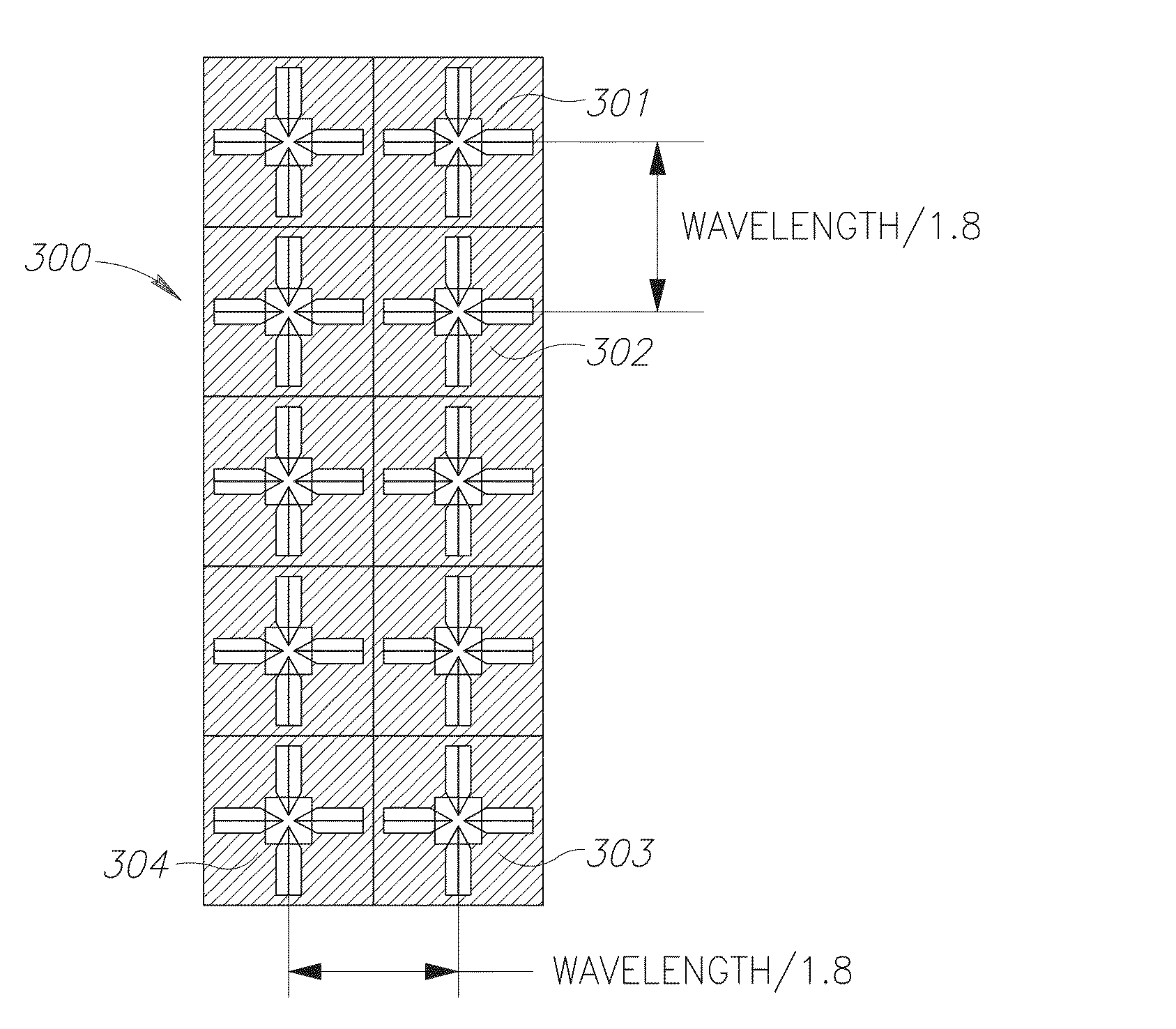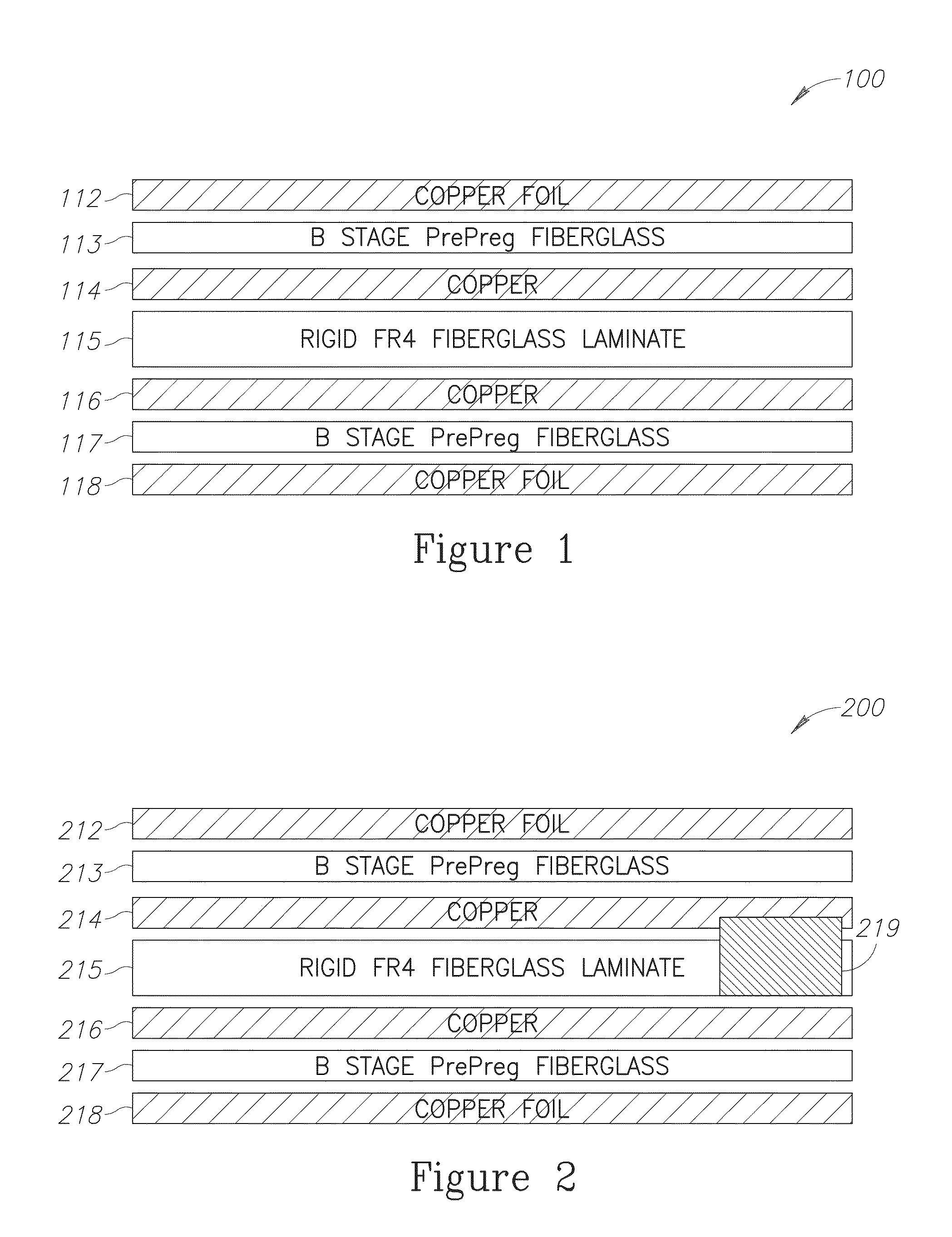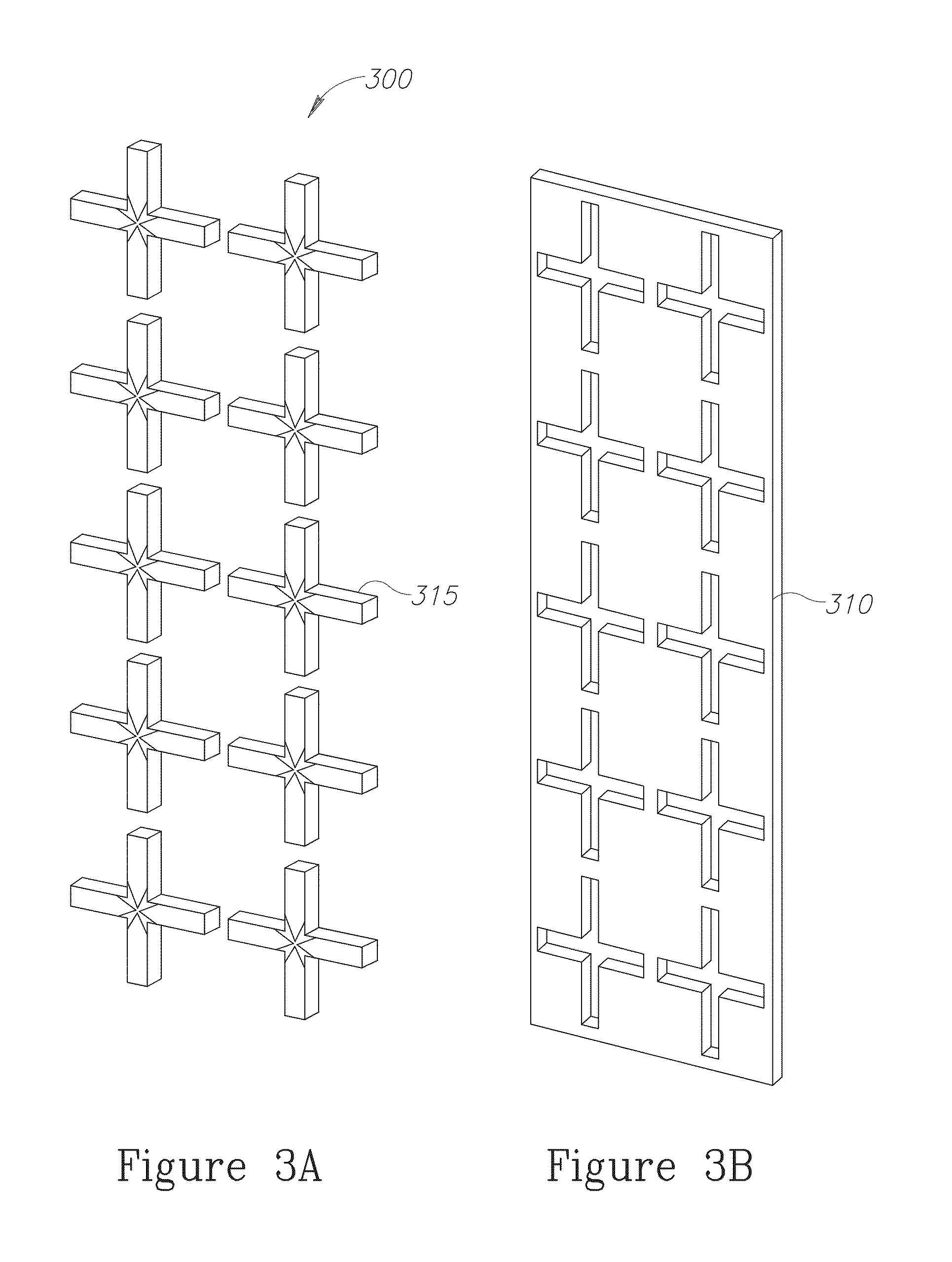Printed antenna having non-uniform layers
- Summary
- Abstract
- Description
- Claims
- Application Information
AI Technical Summary
Benefits of technology
Problems solved by technology
Method used
Image
Examples
Embodiment Construction
[0037]The present invention relates to printed antennas for radiating and receiving electromagnetic waves and, more particularly to a low profile, printed antenna comprising non-uniform dielectric layers.
[0038]As illustrated in FIG. 1, an antenna such as PCB based antennas design and manufacturing methods used by prior art include a plurality of uniform dielectric layers included in the PCB multi-layer antenna. For example a low loss dielectric materials such as glass-epoxy or Teflon is used to entirely and or laterally fill the space between each pair of conducting layers.
[0039]The present invention provides a printed antenna, such as a multi-layer antenna comprising one or more non-uniform dielectric layers. More specifically the present invention provides a printed antenna comprising a plurality of dielectric layers, and a plurality of conducting layers, wherein at least one of the antenna's dielectric layer contains regions, such as lateral regions or sections with differing die...
PUM
 Login to View More
Login to View More Abstract
Description
Claims
Application Information
 Login to View More
Login to View More - R&D
- Intellectual Property
- Life Sciences
- Materials
- Tech Scout
- Unparalleled Data Quality
- Higher Quality Content
- 60% Fewer Hallucinations
Browse by: Latest US Patents, China's latest patents, Technical Efficacy Thesaurus, Application Domain, Technology Topic, Popular Technical Reports.
© 2025 PatSnap. All rights reserved.Legal|Privacy policy|Modern Slavery Act Transparency Statement|Sitemap|About US| Contact US: help@patsnap.com



